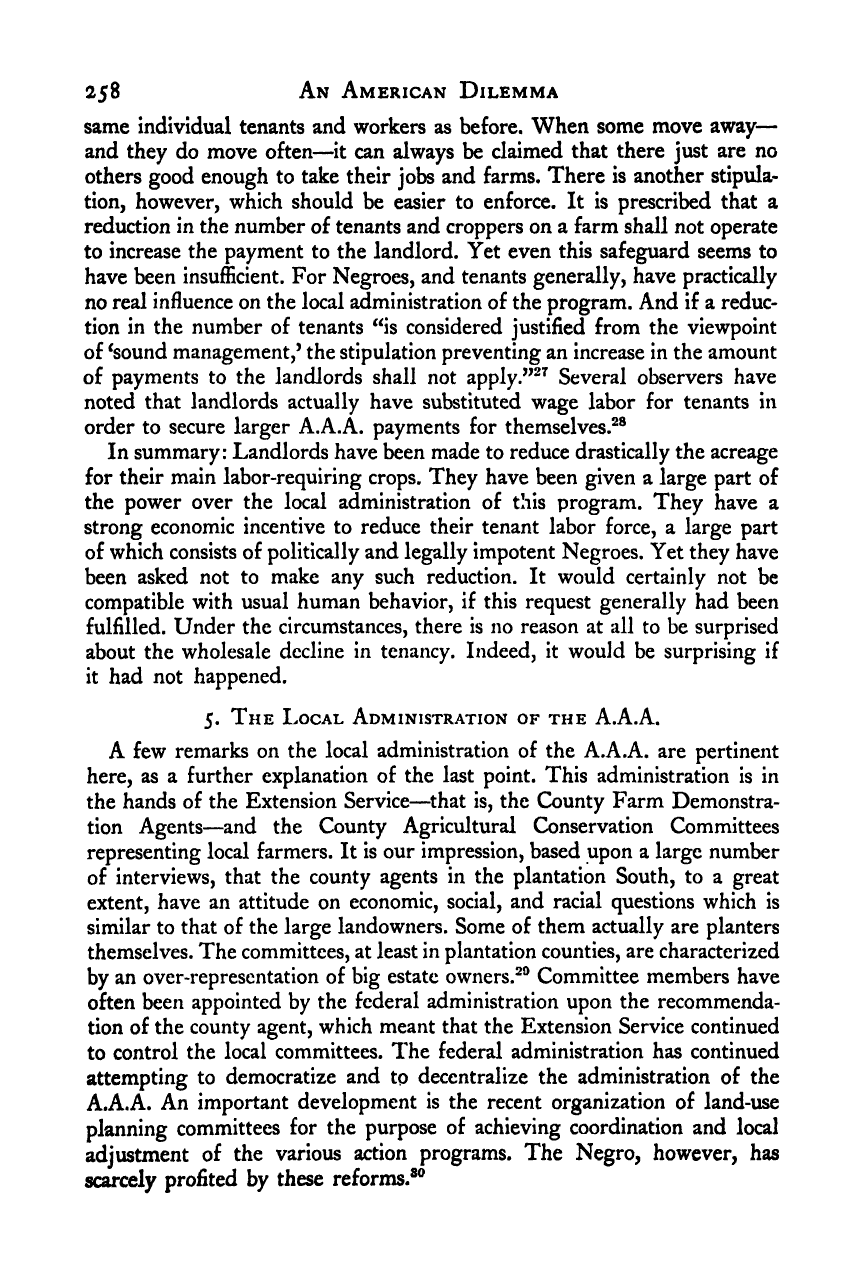Note: Gunnar Myrdal died in 1987, less than 70 years ago. Therefore, this work is protected by copyright, restricting your legal rights to reproduce it. However, you are welcome to view it on screen, as you do now. Read more about copyright.
Full resolution (TIFF) - On this page / på denna sida - IV. Economics - 12. New Blows to Southern Agriculture During the ’Thirties: Trends and Policies - 4. A.A.A. and the Negro - 5. The Local Administration of the A.A.A

<< prev. page << föreg. sida << >> nästa sida >> next page >>
Below is the raw OCR text
from the above scanned image.
Do you see an error? Proofread the page now!
Här nedan syns maskintolkade texten från faksimilbilden ovan.
Ser du något fel? Korrekturläs sidan nu!
This page has never been proofread. / Denna sida har aldrig korrekturlästs.
258 An American Dilemma
same individual tenants and workers as before. When some move away
—
and they do move often—it can always be claimed that there just are no
others good enough to take their jobs and farms. There is another stipula-
tion, however, which should be easier to enforce. It is prescribed that a
reduction in the number of tenants and croppers on a farm shall not operate
to increase the payment to the landlord. Yet even this safeguard seems to
have been insufficient. For Negroes, and tenants generally, have practically
no real influence on the local administration of the program. And if a reduc-
tion in the number of tenants ^fls considered justified from the viewpoint
of ^sound management,’ the stipulation preventing an increase in the amount
of payments to the landlords shall not apply.”’^ Several observers have
noted that landlords actually have substituted wage labor for tenants in
order to secure larger A.A.A. payments for themselves.^®
In summary: Landlords have been made to reduce drastically the acreage
for their main labor-requiring crops. They have been given a large part of
the power over the local administration of this program. They have a
strong economic incentive to reduce their tenant labor force, a large part
of which consists of politically and legally impotent Negroes. Yet they have
been asked not to make any such reduction. It would certainly not be
compatible with usual human behavior, if this request generally had been
fulfilled. Under the circumstances, there is no reason at all to be surprised
about the wholesale decline in tenancy. Indeed, it would be surprising if
it had not happened.
5. The Local Administration of the A.A.A.
A few remarks on the local administration of the A.A.A. are pertinent
here, as a further explanation of the last point. This administration is in
the hands of the Extension Service—^that is, the County Farm Demonstra-
tion Agents—and the County Agricultural Conservation Committees
representing local farmers. It is our impression, based upon a large number
of interviews, that the county agents in the plantation South, to a great
extent, have an attitude on economic, social, and racial questions which is
similar to that of the large landowners. Some of them actually are planters
themselves. The committees, at least in plantation counties, are characterized
by an over-representation of big estate owners.^® Committee members have
often been appointed by the federal administration upon the recommenda-
tion of the county agent, which meant that the Extension Service continued
to control the local committees. The federal administration has continued
attempting to democratize and to decentralize the administration of the
A.A.A. An important development is the recent organization of land-use
planning committees for the purpose of achieving coordination and local
adjustment of the various action programs. The Negro, however, has
scarcely profited by these reforms.®^
<< prev. page << föreg. sida << >> nästa sida >> next page >>